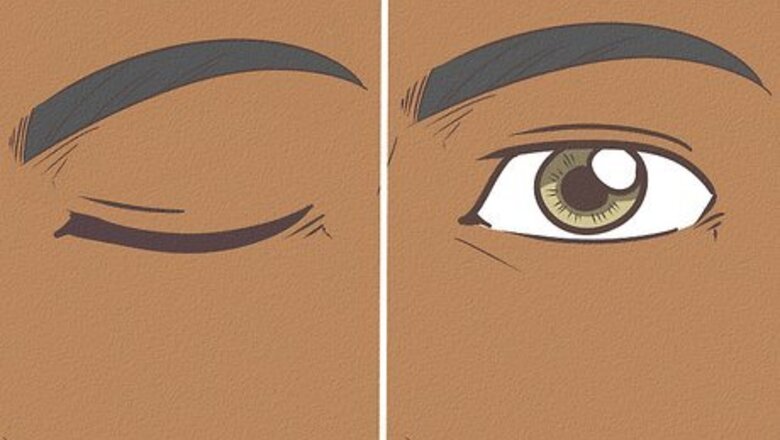
views
Getting the Dirt Out
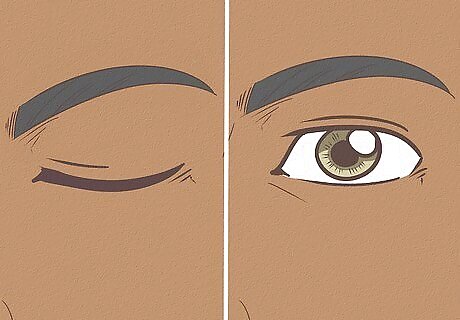
Blink your eyes. You may be able to dislodge the dirt in your eye with very little effort. Once you notice the dirt in your eye, blink your eyes several times. The blinking reflex in the eye allows the lashes and lids to move tears around and remove bacteria and debris out of the eye. If simple blinking does not help, stretch your upper eyelid over your lower eyelid and then blink your eye repeatedly. This allows the lashes on the lower lid to sweep the dirt out of your eye.
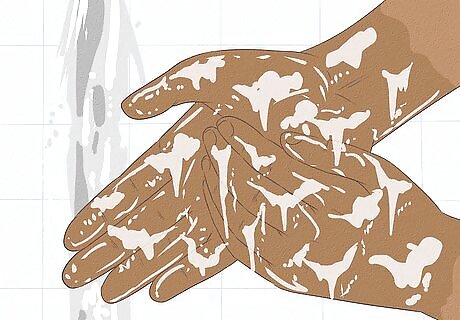
Wash your hands. If blinking doesn't get the dirt out, you need to intervene. Before touching your eye, however, you need to wash your hands. Washing hands before handling your eyes is important to reduce any possible contamination from bacteria, germs, or additional irritants. You don't want to remove any dirt from your eye only to infect it with something worse. This is important because your eyes are vulnerable to infections. Wash your hands with antibacterial soap and warm water. Dry them on a clean towel.
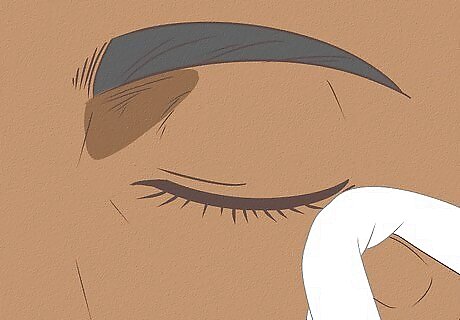
Pat away excess tears. When you have dirt in your eye, you will likely have an increase in tear production. If you do, close your eyelids gently and dab your eye with a tissue. The increased tear production will help flush out the dirt. Allow your eyes to water and the tears to wash them clean. Remember, do not rub your eyes. Use the tissue to gently blot up the overflow as it washes out of your eye.

Inspect your eye. Pull your lower eyelid down and slowly look around, looking for anything lodged in your eyelid. Do the same with your upper eyelid, looking for anything lodged on your eyeball. If you want to examine underneath your eyelid, place a cotton swab right above the upper eyelid and flip the lid over with the cotton swab. This will allow you look for any dirt lodged in the eyelid itself. If you are having a hard time finding the dirt, have a friend or family member do the inspection for you.

Remove the dirt. If the dirt is on your eyelid or easily accessible area of your eye, you may be able to remove it with a cotton swab. If you can see the area of your eye or eyelid where the dirt is, take a clean cotton swab and dab it on the dirt. It should attach to the end of the swab after you dab it a few times. Do not jab your eye with the swab or swipe the swab too harshly against the dirt. This could embed the dirt in your eyelid. If the dirt doesn't come off when you dab it, try another method.
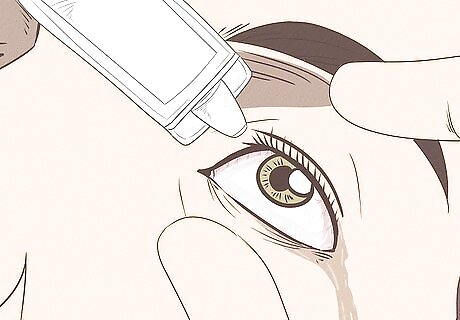
Rinse your eyes. If the dirt hasn't come out with blinking or with a cotton swab, rinse your eyes to get the dirt out. To wash the dirt out of your eye, use an over-the-counter sterile eye wash or pour clean water over your eye using a cup. Keep up a continuous stream over your eye while holding your lids open for 15 minutes. Even after the dirt comes out, keep rinsing to help cleanse any additional debris from your eye. If you have an object in your eye, try removing it with artificial tears, if you have any on hand. Tap water could contain organisms that could contaminate your eye if the foreign object caused a scratch. If all you have available is tap water, however, it's okay to use that. You can also apply gentle pressure with a stream of water from the faucet to wash debris from your eye, using your fingers to hold your lids open. Look for eyewash that has neutral pH of 7.0. Keep the water between 60°F (15.6°C) and 100°F (37.8°C) to keep your eye comfortable. If you have an eye bath, which is available at most pharmacies, use this to rinse your eyes.
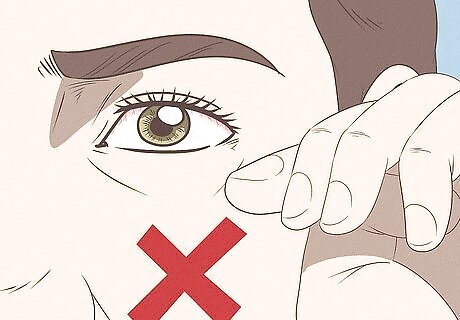
Do not rub your eye. If there's something in your eye and you rub it, you could scratch the surface of your eye. Instead, try flushing or blotting your eyes to remove whatever's in them.
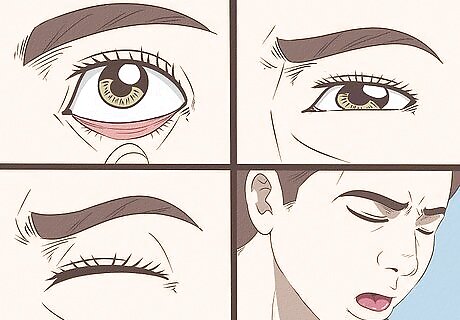
Seek medical attention. Seek emergency medical treatment right away if your attempts have failed to get the dirt or other debris out of your eye. Seek medical attention right away if you experience any of the following: You cannot remove the dirt from your eye The dirt is embedded inside your eye You experience blurred or otherwise abnormal vision Pain, redness, or discomfort continues after the dirt has been removed from the eye Blood in the eye, lightheadedness, dizziness, nausea, vomiting, or headache
Taking Care of Your Eye
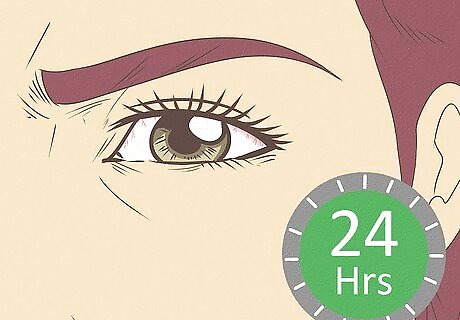
Expect discomfort. You should expect some minor discomfort after you get the dirt out. It's common to feel a scratchiness or discomfort in your eye, even after you have removed the offending dirt. This is part of the natural healing process and it can take up to 24 hours to recover.

Protect your eye afterward. Take precautionary measures to protect your eye during the recovery process. During this time, your eye is extra sensitive. Protecting your eye includes: Protecting eyes from ultraviolet light or bright light by wearing sunglasses Avoiding the use of prescription contact lenses until your eye care professional has given the OK Avoiding hand contact with the eye area and washing your hands before touching the eye area Alerting and informing your eye care professional if new symptom arise or if pain becomes unbearable If you continue to feel scratchiness or discomfort in your eye for more than a day after removing the dirt, consult a physician
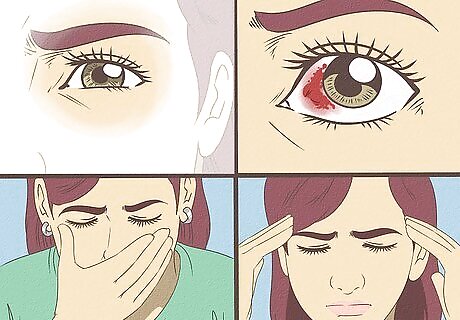
Seek help. If your eye gets worse, you're going to need to see a specialist. Some after effects can be expected, but the effects should not last more than 24 hours. The continued discomfort and irritation could be a sign of a larger problem or an infection. Symptoms to look for are: Blurred or double vision Continual or increased pain Blood covering part of the iris Sensitivity to light Signs of infection Nausea or vomiting Headaches or lightheadedness Dizziness or loss of consciousness

Avoid making the problem worse. There are some actions that you should avoid when dealing with your eyes. These things can cause severe eye injury or pain. These actions include: Removing any piece of metal, large or small, that has lodged itself in the eye Putting any pressure on the eye itself in an effort to dislodge the dirt Using tweezers, toothpicks, or other hard object to get the dirt out















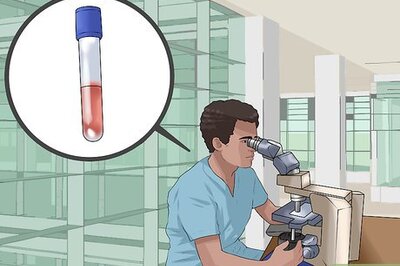




Comments
0 comment